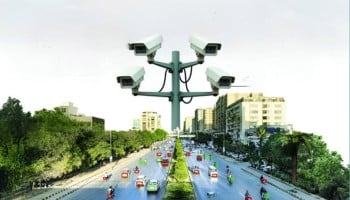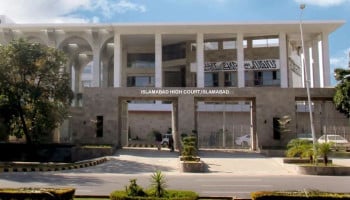
Imagine this: every text you send, video you stream, or social media post you share isn’t just a virtual act — it’s leaving a physical mark on the planet. This invisible impact, known as the digital carbon footprint, is quietly contributing to the global climate crisis.
In countries like Pakistan, where digital activities are skyrocketing with the rise of mobile internet, e-commerce, and social media, the environmental cost of our online activities is becoming impossible to ignore. Behind every scroll, click, and tap lies a chain of energy consumption — from data centres to device manufacturing — that adds to carbon emissions and strains natural resources.
As the country embraces a digital revolution, understanding the hidden environmental toll of our expanding digital habits has never been more urgent.
What is a digital carbon footprint?
A digital carbon footprint refers to the greenhouse gas emissions generated by our use of technologies and online activities. Every action performed on an electronic device — whether sending a text, streaming a video, or running a search query — requires energy.
The carbon emissions resulting from this energy consumption have a proven environmental impact. As digital consumption increases, so too does its associated carbon footprint, making it a significant contributor to global emissions.
The growing demand for digital services in Pakistan
According to the Pakistan Telecommunication Authority (PTA), the country boasts over 100 million mobile subscribers. This surge in mobile usage reflects the rapid expansion of internet penetration across Pakistan. The widespread adoption of smartphones, video streaming, and social media platforms has significantly amplified digital consumption.
Discussing the issue with Gadinsider, Muhammad Toheed, a Karachi-based urban planner and geographer, stated: “The burgeoning digital carbon footprint in Pakistan can be attributed to several interrelated factors stemming from the significant rise in internet and mobile usage. The widespread adoption of smartphones, video streaming services, and social media platforms has markedly increased digital consumption, thereby intensifying energy demands on data centres, networks, and device manufacturing.”
Energy consumption and the role of data centres
To support this rising demand, data centres have proliferated to meet processing, storage, and cooling needs. These centres are energy-intensive, consuming about 1% of total global electricity, a figure expected to grow with further digital expansion, according to the International Energy Agency (IEA).
Toheed explained further: “Local data centres and a growing reliance on cloud computing in Pakistan have further escalated energy consumption for data processing and cooling, making them a substantial contributor to emissions.”
The energy sources fuelling digital infrastructure are a critical factor. Pakistan’s power grid, as noted in a Ministry of Climate Change report, is heavily reliant on non-renewable sources such as coal and natural gas. This dependency exacerbates the emissions profile of digital activities.

Additionally, energy-intensive devices like laptops, tablets, and IoT devices have increased demand. The growth of e-commerce and digital banking has further driven the need for reliable connectivity and data processing, increasing energy consumption across the country’s ICT sector.
Energy efficiency in digital activities
Climate Action Centre (CAC) Karachi Director Yasir Hussain discussed with Gadinsider the various reasons on how energy efficiency plays a big part in the concept of the digital carbon footprint, particularly in Pakistan's context.
Explaining how Pakistan’s energy infrastructure affects its digital carbon footprint, Hussain said: “As far as the energy mix is concerned, we are heavily dependent on fossil fuels, including imported coal, local coal. Then we have gas, including LNG, and then we have diesel and furnace oil, which is still used for power. Coal is also, you know, one of those important fossil fuels for power production.”
This dependence on a carbon-intensive energy mix heavily influences the emissions from digital activities, including data centres, mobile networks, and other IT infrastructure. Clean energy sources and energy efficiency practices within the digital ecosystem are vital for the reduction of such emissions.
While highlighting the context of energy efficiency that plays a vital role in digital activities, Hussain emphasised: “Energy efficiency is a key concept in data centres, and it's not only because of the electricity built but also because the machines are, generally speaking, becoming more efficient. So there is a balance that needs to be struck there.”
Hussain's point about the minimal contribution of solar and wind energy highlights a missed opportunity. If such renewable sources like solar and wind with very negligible carbon footprints are better integrated in the energy mix, it would lead to a digital carbon footprint significantly reduced instead of using fossil fuels that, on one hand, fuel digital growth in Pakistan but, on the other hand, aggravate the emissions involved.
This lack of renewable energy integration, especially in cities such as Karachi where digital activity is concentrated, further underlines the challenge of making digital operations sustainable in the long term.
"If you look at Karachi, it's like one or two percent, and overall it's again, you know, a few percent. And then in the plan for the next 10 years, it's not going up by much,” Hussain added.
Environmental and societal implications
The environmental consequences of Pakistan’s growing digital carbon footprint are substantial. According to a 2023 report by the Global Carbon Project, emissions from digital technology are rising in Pakistan, driven by non-renewable energy reliance.

Toheed warned: “This growth results in increased carbon emissions, primarily due to the reliance on non-renewable energy sources, which significantly contributes to the nation's carbon footprint.”
The extensive energy demand of digital infrastructure has also strained Pakistan’s national power grid, contributing to recurring power outages. These shortages disrupt business operations and household economies, further compounding socio-economic challenges.
Another consequence is the increase in electronic waste (e-waste). The United Nations Environment Programme (UNEP) estimates that Pakistan generates significant amounts of e-waste annually, most of which is improperly disposed of due to inadequate recycling infrastructure.
As Toheed pointed out: “The heightened use of electronic devices has led to a surge in electronic waste, with improper disposal and recycling practices posing serious environmental pollution and health risks due to toxic components like lead and mercury.”
Without an organised recycling system, toxic chemicals from e-waste can leach into soil and groundwater, creating long-term health risks for communities.
The societal impact is equally concerning. The World Resources Institute (WRI) recently highlighted that data centres are highly water-intensive, posing a unique challenge for Pakistan, a nation already grappling with severe water scarcity.
Toheed elaborated: “The water-intensive nature of data centres and cooling systems compounds these challenges by exacerbating water stress.”
Additionally, the rapid growth of digital infrastructure risks widening the digital divide between urban and rural areas. Limited access to digital services in rural regions could exacerbate social inequalities.
The overuse of digital devices also carries health risks. The World Health Organization (WHO) has linked prolonged screen exposure to sleep disorders, eye strain, and mental health issues.
Strategies for reducing Pakistan’s digital carbon footprint
Addressing Pakistan’s digital carbon footprint requires a multifaceted approach. Greenpeace has recommended that ICT companies and data centres transition to renewable energy sources, such as solar and wind, to reduce reliance on fossil fuels.
Toheed emphasised: “Encouraging ICT companies and data centres to transition to renewable energy sources can significantly reduce fossil fuel dependency. The design of energy-efficient green data centres with advanced cooling technologies and energy-saving measures could also help reduce emissions associated with data storage and processing.”
Public awareness campaigns are crucial for promoting the sustainable use of digital resources. The Pakistan Environmental Protection Agency could spearhead initiatives to educate the public on responsible digital habits, such as reducing screen time and choosing energy-efficient devices.

As Toheed suggested: “Such campaigns, combined with the adoption of energy-efficient ICT equipment, can promote digital efficiency and reduce unnecessary environmental impacts.”
To tackle the e-waste crisis, UNEP advocates implementing Extended Producer Responsibility (EPR) policies. These would require manufacturers to reclaim and responsibly recycle outdated devices, encouraging the design of durable, recyclable products.
Toheed called for a comprehensive national e-waste management framework: “A structured system for managing e-waste is crucial to mitigate the adverse effects of electronic waste on the environment and public health.”
Addressing the country’s renewable energy targets and the challenges in achieving them, Hussain highlighted the importance of increasing reliance on clean energy sources to reduce emissions from digital infrastructure: “The targets that have been given are 30% for wind and solar until 2030, but it does not look like we're going to meet them and progress is slow.”
He also pointed to the role of policy initiatives in driving this transition, referencing the government’s efforts to promote green energy: “ Overall energy efficiency does play an important role in the concept of a digital carbon footprint if we switch to renewables plus building design materials that go into the building and its infrastructure depending on sunlight and wind direction, can reduce your energy bill by 20%. As this is part of our 2023 Green Energy and Energy Efficiency policy introduced by the federal government.”
Building sustainable digital growth
Pakistan urgently needs a robust national policy to address sustainable digital growth. Public-private partnerships in green technology innovation could drive the creation of energy-efficient infrastructure.
Collaborative initiatives can fund the development of green technologies to make the nation’s ICT sector more environmentally friendly. Strategic investments in rural digital infrastructure, as envisioned by the WRI, could also support inclusive growth, reducing the pressure on urban centres while bridging the digital divide.
By prioritising renewable energy, adopting energy-efficient technologies, and promoting responsible digital consumption, Pakistan can reduce the environmental toll of its digital expansion. A coordinated effort across sectors is essential to create a sustainable digital future that balances growth with environmental stewardship.
















